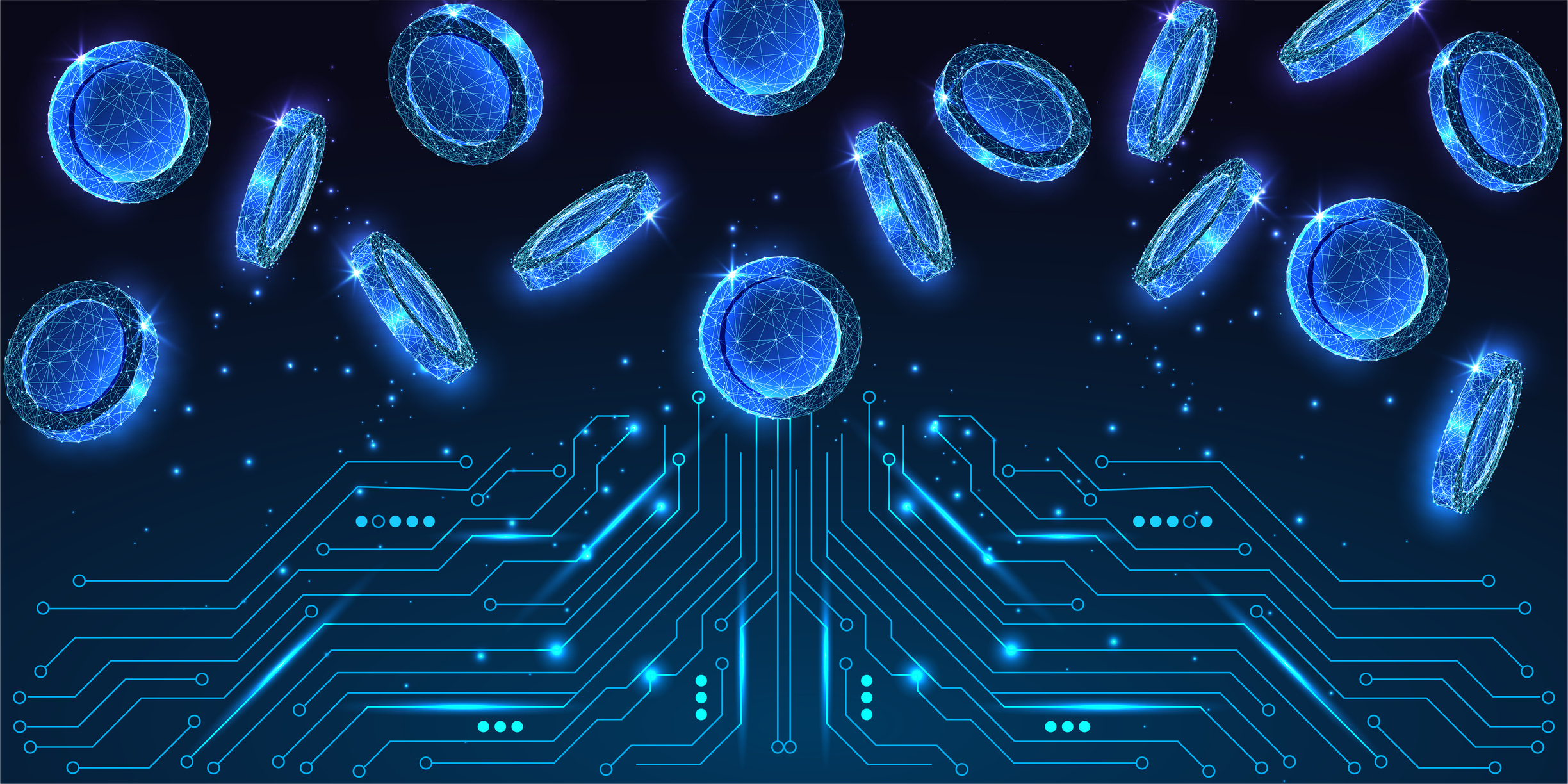Retirees, Maximize Your Income From Dividends
Stocks that can deliver steady dividend growth, rather than the richest yields, offer the most fertile ground for dividend investors.


Dividend investing is supposed to be a bit like watching grass grow: steady progress, few surprises. But lately, investors holding dividend-paying stocks have suffered some jarring setbacks.
Higher-yielding sectors such as utilities and real estate investment trusts saw valuations soar through much of 2016, then suffered sharp pullbacks later in the year. Analysts see more pain ahead for high-dividend-yielding stocks as interest rates start to rise, diverting income-focused investors from stocks into bonds. A stretch of stagnant earnings growth, meanwhile, put the brakes on the double-digit dividend growth that investors have grown accustomed to since the financial crisis. Standard & Poor’s 500-stock index dividends climbed just 5% in 2016.
“It’s realistic to start thinking that the best might be over in terms of dividend growth,” says Christine Benz, director of personal finance at investment-research firm Morningstar.
From just $107.88 $24.99 for Kiplinger Personal Finance
Become a smarter, better informed investor. Subscribe from just $107.88 $24.99, plus get up to 4 Special Issues

Sign up for Kiplinger’s Free Newsletters
Profit and prosper with the best of expert advice on investing, taxes, retirement, personal finance and more - straight to your e-mail.
Profit and prosper with the best of expert advice - straight to your e-mail.
Does this mean older investors should scale back dividend holdings? Hardly. The idea of getting income from stocks still “makes a lot of sense, particularly in this low-rate world,” says Tony DeSpirito, co-manager of BlackRock Equity Dividend fund. At roughly 2.5%, the yield on the Russell 1000 Value Index is about the same as the yield on the 10-year Treasury, he notes. But while the Treasury bond offers a fixed coupon, stocks offer potential dividend growth and share-price appreciation.
The challenge is to pick the right dividend stocks or funds. Rounding up the usual suspects—high dividend-yielding utilities, REITs, consumer staples and telecom stocks—may not be the best approach. One reason: You’d be ignoring some of the biggest dividend-paying sectors, including technology and financials.
The higher-yielding stocks also look expensive, even after their late-2016 sell-off, money managers say. Investors have used them as bond substitutes in a low-rate era, and as rates rise, these bond proxies will suffer more than lower dividend-yielders.
Stocks that can deliver steady dividend growth, rather than the richest yields, offer the most fertile ground for dividend investors. These holdings look cheaper than the high-yielders, they can hold up well in a rising-rate environment, and they can offer a buffer against market volatility.
You can maximize the income you get from these holdings by minimizing fees and taxes. In a dividend-focused mutual fund, a lofty expense ratio can chew through most of your yield. And although the 15% tax rate paid by most investors on qualified dividends seems relatively benign, many holdings favored by dividend investors and dividend funds don’t get this treatment. Most REIT payouts, for example, are taxed as ordinary income.
Follow these tips to build a dividend portfolio that can deliver reliable income despite rising rates and slowing dividend growth—so you can get back to watching the grass grow.
Go for Growth
Reliable dividend growers have proved resilient during the roughest times in the market. In a recent study, S&P Dow Jones Indices compared the performance of dividend “aristocrats”—S&P Composite 1500 stocks that have raised their dividends every year for at least 20 years—against high-yielding stocks in the S&P 500. During the 15 worst months for the broader stock market from the end of 1999 through September 2016, the aristocrats lost 5.9%, on average, versus an 8.6% loss for the high-yielders and an 8.9% average decline for the S&P 1500.
The aristocrats tend to be more resilient during the worst market downturns in part because raising dividends year after year reflects a certain level of financial health and discipline, S&P notes.
So where can you find dependable dividend growers at a decent price? For old-school dividend investors raised on Ma Bell and Coca-Cola, the answers may be a bit surprising.
One sector that’s highly favored by value-minded dividend fund managers these days: technology. In 2016, the sector surpassed financials to become the biggest contributor to S&P 500 dividends, accounting for 15.5% of payouts.
Mature tech companies, such as Microsoft (symbol MSFT; recent price, $64), Cisco Systems (CSCO, $32) and Qualcomm (QCOM, $54), generate loads of free cash flow and are finding fewer opportunities to re-invest in their businesses, says Mike Liss, co-manager of the American Century Value fund. That leaves them with an “ability to increase their dividends at a rate better than the average stock,” Liss says.
Microsoft, which yields 2.3%, has nearly doubled its quarterly dividend in the past five years, to 39 cents a share. Money managers see more healthy dividend growth ahead as the company’s leadership in cloud computing improves its earnings-growth prospects.
Cisco, which yields 3.3%, is known for making the switches and routers that move data around computer networks. But Cisco is also expanding into faster-growing areas such as collaboration and security. The company has boosted its dividend every year since initiating its payout in 2011.
Patient investors should also take a look at Qualcomm, which yields 3.8%, says John Buckingham, chief investment officer at AFAM Capital and manager of the Al Frank fund. The stock has been crushed this year, in part because Apple is suing Qualcomm over its business practices, and it now trades at just 11 times analysts’ estimate of earnings in the coming year. Buckingham believes the litigation will ultimately be settled and “the magnitude of the decline has created opportunity for those who can take a long-term view.”
Look for Healthy Payouts
Health care stocks have looked rather sickly lately. Concerns about repeal of the Affordable Care Act, as well as talk from Washington about negotiating lower drug prices, have weighed on the sector.
But the political noise has created an opportunity for long-term dividend investors, particularly in drug stocks. “If you continue to create drugs that are innovative and meet unmet needs, you’re going to get premium pricing for those products,” Liss says.
Holdings in Liss’s fund include drug giants Pfizer (PFE, $32) and Merck (MRK, $64). Pfizer yields 3.8% and trades at just 13 times analysts’ estimate of its full-year earnings. While the loss of patent protection on several drugs is a headwind, the company maintains an impressive portfolio of patent-protected drugs and is launching several potential best-sellers in cancer, immunology and other areas.
Like Pfizer, Merck has a strong pipeline of new drugs to balance out upcoming patent losses. Cancer drug Keytruda has been a notable success as the company sharpens its focus on unmet medical needs. Merck yields 2.9% and has raised its dividend six years in a row.
Swiss drug giants Roche Holding (RHHBY, $30) and Novartis (NVS, $75) also look like good values, says Matt Burdett, associate portfolio manager at Thornburg Investment Management. Pricey biologics, which tend to have less generic competition, account for a large portion of Roche’s drug sales, and Roche also has a strong diagnostics business. The stock yields 3.4%.
Novartis, which yields 3.6%, is well diversified with pharmaceuticals, eye care and other businesses. The company is launching several drugs in key areas such as cancer and heart failure.
Guard Against Rising Rates
Rising rates generally aren’t disastrous for dividend stocks. Looking at the two-, three- and five-year periods following the initiation of Federal Reserve rate-hiking cycles dating back to 1954, dividend payers have outperformed non-dividend payers, according to AFAM Capital.
But when interest rates rise, some dividend payers do suffer. In recent research, Morningstar looked at rising-rate periods from May 1953 through the end of 2016. The 30% of stocks with the highest yields lost about 1.5%, on average, while the 30% with the lowest yields gained 3.2%.
Many dividend-focused fund managers are favoring a sector that stands to benefit from rising rates: financials. As rates rise, banks may see an improvement in their net interest margins—a measure of lending profitability. What’s more, banks are likely to see looser capital requirements and other deregulation under the new administration, says Sandy Pomeroy, co-manager of the Neuberger Berman Equity Income fund. With capital freed up, banks may have more flexibility to boost their dividends.
Many big bank stocks saw sharp run-ups after the election. One that still looks attractively valued is Bank of America (BAC, $23), says Matt Quinlan, co-manager of the Franklin Income fund. At 1.1%, it doesn’t have the richest yield, but it trades for less than book value. The bank has slowly recovered from its ill-advised 2008 acquisition of mortgage lender Countrywide Financial and has sharply cut costs in recent years.
Rising rates are also “a positive for insurance companies who have substantial dollars in fixed income,” Buckingham says. He likes MetLife (MET, $53), which yields 3% and trades at just 10 times analysts’ estimate of its full-year earnings. The company is spinning off a U.S. retail unit, a move that analysts see as helping MetLife generate more stable cash flow.
Focus on Funds
If you’re shopping for a dividend-focused mutual fund, keep a close eye on fees. A mutual fund’s expense ratio eats into its yield. So “the relationship between expense ratio and income is quite direct,” Benz says.
One high-quality, low-cost fund is Vanguard Dividend Appreciation (VIG), an exchange-traded fund that yields 2.1% and charges just 0.09% annually. It tracks the Nasdaq U.S. Dividend Achievers Select Index, which includes companies that have boosted dividends for at least 10 consecutive years.
Another low-cost option: Schwab U.S. Dividend Equity ETF (SCHD). The fund tracks the Dow Jones U.S. Dividend 100 Index, which includes companies that not only have paid dividends for 10 years in a row but also have strong cash-flow-to-debt ratios, return on equity, dividend yield and dividend growth. The fund yields 2.9% and charges just 0.07% annually.
Investors looking to avoid the highest yielders might also consider iShares Core Dividend Growth ETF (DGRO). It tracks the Morningstar U.S. Dividend Growth Index, which excludes stocks with yields in the top 10% of the broader stock universe. The fund charges 0.08% annually and yields 2.3%.
Whether you’re choosing a dividend-focused fund or picking your own stocks, pay attention to the potential tax hit. Qualified dividends, which include most U.S. stock dividends, get favorable tax treatment. Taxpayers in the 25% to 35% tax brackets pay 15% on qualified dividends. Taxpayers in the 10% and 15% brackets pay zero; those above the 35% bracket pay 20%. If your adjusted gross income is more than $200,000 for singles or $250,000 for married couples, you’ll owe an additional 3.8% on your net investment income, including qualified dividends.
But many holdings favored by dividend investors don’t pay qualified dividends. Payouts from REITs, some foreign stocks and convertibles can be taxed as ordinary income. With master limited partnerships, a large chunk of distributions is typically tax-deferred, but investors may pay a combination of capital-gains and ordinary-income tax rates when they sell their units.
“It’s worth looking under the hood” of dividend-focused funds because many of these funds hold non–qualified dividend payers, Benz says. She points to American Century Equity Income, which is a high-quality fund but tends to hold some non–qualified dividend payers such as convertibles. The fund’s 10-year tax-cost ratio is 1.8, according to Morningstar, meaning that investors have lost an average annual 1.8% of assets to taxes. Investors in Vanguard Dividend Appreciation Index fund, which holds only common stocks, have sacrificed far less to taxes, losing an average annual 0.73% over the period.
Another taxing question for dividend investors is whether to hold foreign dividend-paying stocks—or funds that invest in those stocks—in an IRA. Many countries withhold taxes from dividends that their companies pay to overseas investors. U.S. investors are taxed a second time on those dividends, either when they report dividend income for their taxable accounts or withdraw money from their IRA. You can claim a foreign tax credit on your federal return for the taxes withheld by the foreign country—but only if you hold the stocks in a taxable account. If you hold the investments in an IRA, there’s no way to recoup the foreign taxes paid.
“If you have an IRA and a taxable account, put the foreign stocks or foreign stock funds into the taxable account,” says John Burke, a financial adviser at Burke Financial Strategies, in Iselin, N.J. But there’s a caveat: Companies in countries that don’t have a tax treaty with the U.S. may pay non-qualified dividends, making them a poor fit for a taxable account. Most countries have a tax treaty with the U.S., but there are significant exceptions such as Brazil, Chile and Singapore.
TAKE OUR QUIZ: Test Your Investing IQ
Profit and prosper with the best of Kiplinger's advice on investing, taxes, retirement, personal finance and much more. Delivered daily. Enter your email in the box and click Sign Me Up.

-
 Stocks Extend Losing Streak After Fed Minutes: Stock Market Today
Stocks Extend Losing Streak After Fed Minutes: Stock Market TodayThe Santa Claus Rally is officially at risk after the S&P 500's third straight loss.
-
 What Bilt Cardholders Need to Know as Wells Fargo Exits the Program
What Bilt Cardholders Need to Know as Wells Fargo Exits the ProgramA major shake-up in the Bilt Rewards program could affect your credit card, rent rewards and points strategy heading into 2026.
-
 3 Major Changes to the Charitable Deduction in 2026
3 Major Changes to the Charitable Deduction in 2026Tax Breaks About 144 million Americans might qualify for the 2026 universal charity deduction, while high earners face new IRS limits. Here's what to know.
-
 Stocks Extend Losing Streak After Fed Minutes: Stock Market Today
Stocks Extend Losing Streak After Fed Minutes: Stock Market TodayThe Santa Claus Rally is officially at risk after the S&P 500's third straight loss.
-
 Santa Claus Rally at Risk as Tech Stocks Slump: Stock Market Today
Santa Claus Rally at Risk as Tech Stocks Slump: Stock Market TodayThe Nasdaq Composite and Dow Jones Industrial Average led today's declines as investors took profits on high-flying tech stocks.
-
 Cooler Inflation Supports a Relief Rally: Stock Market Today
Cooler Inflation Supports a Relief Rally: Stock Market TodayInvestors, traders and speculators welcome much-better-than-hoped-for core CPI data on top of optimism-renewing AI earnings.
-
 Nasdaq Sinks 418 Points as Tech Chills: Stock Market Today
Nasdaq Sinks 418 Points as Tech Chills: Stock Market TodayInvestors, traders and speculators are growing cooler to the AI revolution as winter approaches.
-
 Stocks Chop as the Unemployment Rate Jumps: Stock Market Today
Stocks Chop as the Unemployment Rate Jumps: Stock Market TodayNovember job growth was stronger than expected, but sharp losses in October and a rising unemployment rate are worrying market participants.
-
 AI Stocks Lead Nasdaq's 398-Point Nosedive: Stock Market Today
AI Stocks Lead Nasdaq's 398-Point Nosedive: Stock Market TodayThe major stock market indexes do not yet reflect the bullish tendencies of sector rotation and broadening participation.
-
 Dow Rises 497 Points on December Rate Cut: Stock Market Today
Dow Rises 497 Points on December Rate Cut: Stock Market TodayThe basic questions for market participants and policymakers remain the same after a widely expected Fed rate cut.
-
 Crypto Trends to Watch in 2026
Crypto Trends to Watch in 2026Cryptocurrency is still less than 20 years old, but it remains a fast-moving (and also maturing) market. Here are the crypto trends to watch for in 2026.